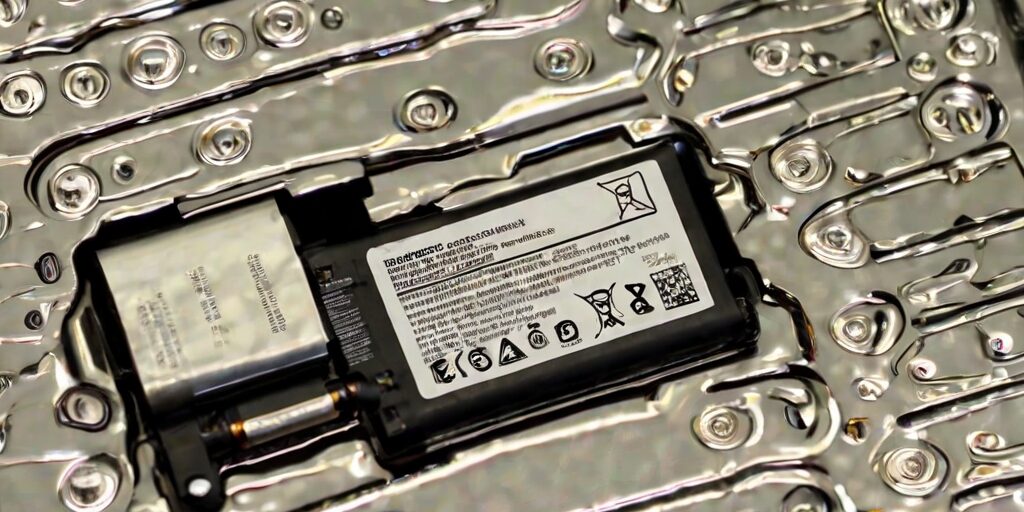Start by explaining what battery swelling is, why it happens, and how it affects laptop performance. Emphasise the safety concerns and risks associated with swollen batteries.Briefly touch on the potential dangers, such as leaking or even bursting, which can lead to a fire. Highlight the importance of early detection to prevent these risks.Mention that in the article, readers will find out how to spot a swollen battery and how to safely replace it, protecting their device and themselves.
What Is Battery Swelling?
1. Causes of Battery Swelling
- Overcharging: One of the primary causes of battery swelling is excessive charging, which may occur due to leaving your laptop plugged in for too long.
- Heat Exposure: High temperatures can cause the battery cells to expand, leading to swelling. Laptops that run hot are particularly vulnerable.
- Manufacturing Defects: Sometimes, a defect in the battery can lead to swelling over time. These issues are often found in batteries from certain manufacturers or production batches.
- Age of the Battery: As a battery ages, its internal components break down, and swelling can occur as a natural byproduct of the chemical reactions inside.
2. How Battery Swelling Affects Your Laptop
- Performance Issues: A swollen battery can disrupt the connection between the battery and the laptop, leading to frequent shutdowns or power loss.
- Physical Damage: If the swelling is severe, it could cause other components of your laptop, such as the screen or keyboard, to get damaged due to pressure from the battery.
Common Symptoms of a Swollen Laptop Battery
- Bulging or Puffed-Up Shape: The most obvious sign of a swollen battery is a bulging or uneven shape on the bottom of the laptop.
- Keyboard or Screen Distortion: You may notice the screen or keyboard becoming misaligned, with gaps appearing where the battery is pushing against them.
- Sudden Shutdowns or Power Loss: If your laptop randomly shuts down or experiences rapid battery drain, the battery might be swollen and not holding a proper charge.
- Battery Not Charging Properly: A swollen battery may not charge past a certain percentage or may charge erratically.
- Overheating: Swelling often causes internal battery short-circuits, leading to heat build-up.
How to Check for Battery Swelling
1. Inspecting the Battery
- Physical Inspection: Turn off your laptop and unplug it from any power source. Gently inspect the battery area for any visible bulging. If the back of the laptop is raised or feels uneven, it’s a sign of a swollen battery.
- Look for Gaps: Check if the battery compartment appears to have any gaps where it was once flush with the rest of the body. A swollen battery can create a space between the battery and the laptop shell.
2. Using Diagnostic Tools
- Battery Health Check: Many laptops offer built-in diagnostic tools that help you monitor battery health. Tools like Windows’ “Battery Report” or macOS’ “System Information” can provide data on battery condition and whether it’s swelling or degrading.
- External Software: Third-party programs such as HWMonitor can also provide detailed information about battery health and temperature.
What Happens if You Ignore Battery Swelling?
- Risk of Battery Leakage: Swollen batteries can leak toxic chemicals that may damage the internal components of your laptop.
- Increased Fire Hazard: In extreme cases, a swollen battery could burst or catch fire due to internal pressure and short-circuiting.
- Device Failure: Prolonged neglect of battery issues may lead to permanent damage, rendering the laptop unusable.
How to Safely Replace a Swollen Laptop Battery
1. When to Replace Your Battery
- When Swelling is Noticeable: If you notice any physical signs of swelling, it’s time to replace the battery. Continuing to use a swollen battery can damage other parts of your laptop.
- Battery Not Charging or Draining Quickly: If your battery’s performance has significantly dropped and recalibration doesn’t help, it’s time for a new battery.
2. DIY vs Professional Battery Replacement
- DIY Replacement: If you’re comfortable with handling electronics and have the right tools, replacing the battery yourself may be possible. However, this can be risky, especially if the swelling is severe.
- Professional Replacement: It’s safest to seek help from professionals, especially if you’re unsure of the process. Professional technicians can replace the battery safely and ensure that your device is functioning properly.
Preventing Battery Swelling in the Future
- Avoid Overcharging: Don’t leave your laptop plugged in once it reaches 100%. Use smart charging habits to keep the battery in the optimal range of 20-80%.
- Keep Your Laptop Cool: Ensure your laptop doesn’t overheat by using it on hard, flat surfaces, and consider investing in a cooling pad.
- Use Quality Chargers: Always use the manufacturer-approved charger, as third-party chargers might overcharge the battery or cause damage.
- Regular Battery Health Monitoring: Keep an eye on the battery’s health using diagnostic tools and replace it when necessary before it becomes swollen.
Conclusion and Call to Action
Recap the importance of identifying and replacing a swollen laptop battery before it leads to serious damage. Highlight the main symptoms to watch out for and the best course of action when a swollen battery is detected.If you suspect your laptop battery is swollen or damaged, don’t wait for further issues to arise. Contact Perth Computer Experts for professional battery replacement and laptop repair services.Our team at Perth Computer Experts is here to help you with battery replacements, repairs, and device maintenance. Get in touch today to keep your laptop running smoothly and safely!




